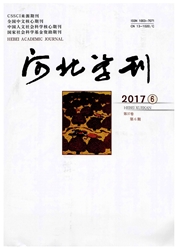

 中文摘要:
中文摘要:
人口持续大规模的流动是中国当前社会转型期的典型特征,人口的集中流入在不断改变大都市人口结构的同时也为人口治理提出了挑战。本文以北京市2004年以来的近10年初婚人口作为青壮年常住人口的代表性子集,通过婚配特点分析了人口结构上的趋势性特征,并且从人口规模与结构、社会分层与融合、家庭变迁与养老等方面梳理出大都市人口治理及研究中的关键问题。在外来人口政策层面,建议大都市逐步从精英化取向转向属地化取向,避免人为干预造成的人群选择效应,在外来人口中相对公正地实现义务与权利、贡献与回报的平衡;在区域协同发展层面,建议首位城市更多发挥协作和服务职能,真正疏解、转移其中心功能,通过缩小地区间经济发展和公共资源配置的差距使人口,
 英文摘要:
英文摘要:
Large - scale and continuous population mobility is a typical characteristic of China's social transition period. Population immigration continually changed the population structure of metropolis and meanwhile challenged its population governance. On the basis of the 10 - year marriage registration data of Beijing since 2004, this paper takes the newly - married couples as research objects which form a representative subset of the young and middle - aged permanent residents. The paper summarizes the characteristics of tendency as of population structure through analyzing the marriage matching features. Then the paper concludes several key problems about population governance and research in metropolis from the perspective of population size and structure, social stratification and inclusion, and family change and supporting. In terms of policies for floating population, the paper suggests a change from elitism to localized management, which helps avoid the selective effects caused by administrative intervention and achieve the balance between duties and rights, and contributions and rewards of immigrants. As of regional synergy, the paper suggests that the chief city undertake more functions in serving and cooperating and essentially shift its core functions to the surrounding areas. Only when the gaps of economic development and resource distribution between different regions narrow and the population flows are diversified, can the population extension problem of metropolis be finally solved.
 同期刊论文项目
同期刊论文项目
 同项目期刊论文
同项目期刊论文
 期刊信息
期刊信息
